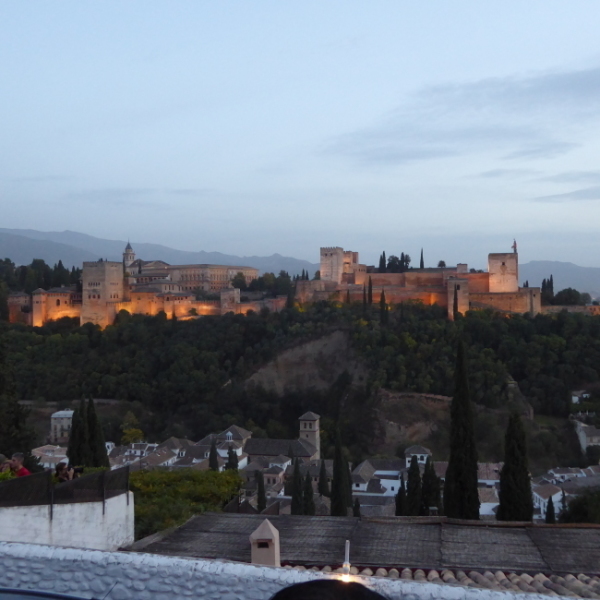
My pic is from the mirador a good hike down and up from Alhambra, longer due to getting lost wandering through the old Muslim quarter - everybody gets lost trying to get to the mirador. Part of the fun. We linked up with a charming Turkish gal, and a German couple who were equally confused. There is always a jolly party of mostly young people up there at the mirador in the evening.
My previous Spain posts from last November:
Real Flamenco
High-speed trains
Tapas in Spain
Moorish Design and Marble Plaster
Moorish Architecture
A few comments on visiting Spain, with lots of Seville photos plus Carmen's work site
With the amusing election, family matters, and holidays past, I will catch up on my Andalusia photo travelogue from early November.
Another inspiration is that I am re-reading (with more interest and understanding after having been there) Menocal's
In the 700s and 800s, Spain was invaded by Moslem immigration partly from Damascus (then the center of the caliphate before it moved to Baghdad) but especially by newly-Muslim Berbers from North Africa. That immigration wave brought civilization to post-Roman Visigoth-ruled Iberian peninsula, Christian in a Visigoth way, which was a dying place where the term "Dark Ages" accurately applied. That immigration/invasion produced the first Golden Age for Spain. The Muslims brought modern irrigation, agricultural wealth, architecture, art, landscape design, education, medical knowledge, enlightened governance, and poetry to a god-forsaken corner of Europe.
The only other place where something similar happened, as far as I know, was in Sicily where the Normans kept the Muslims on the job because they knew how to run things properly and were well-educated. Those were not the Muslims who grab the news these days.
Note to all history teachers and profs: My problem with your courses is that you never seem to locate the details in the Big Picture, into the Big Timeline. Please do it - it's for the kids!
All right, onward from Cordoba to Jaen and Grenada below the fold. I'll do a Madrid post later.
Because the train line from Cordoba to Grenada was undergoing upgrades for high-speed, we engaged a driver (Irishman, as it turned out) to drive us. He convinced us to do a stop in Jaen to look at the downtown and the old castle.
Except for the mountains, it's olive monoculture. Spain is the world's largest producer of olive oil.
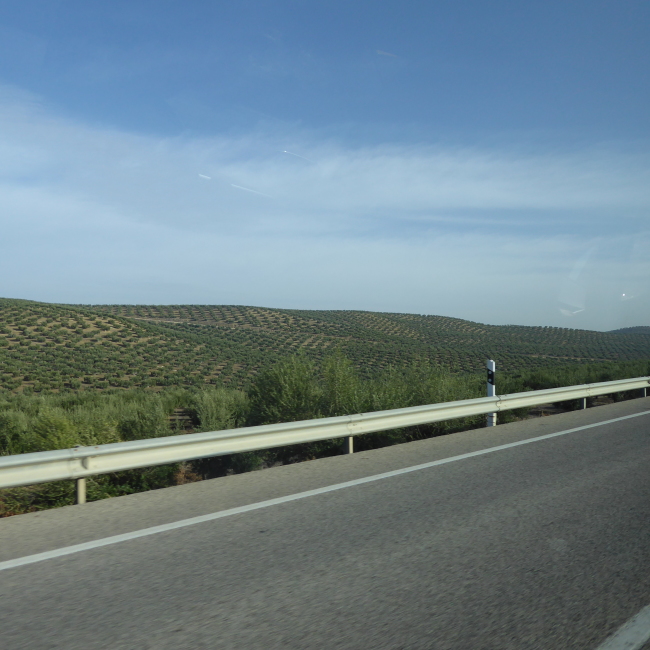
So we stopped by the Castle of Santa Catalina, built in the 800s by Abdallah ibn al-Ahmar but modified thereafter until being totally wrecked by Napoleon's army as it departed southern Spain. Napoleon left ruin behind him wherever he went.
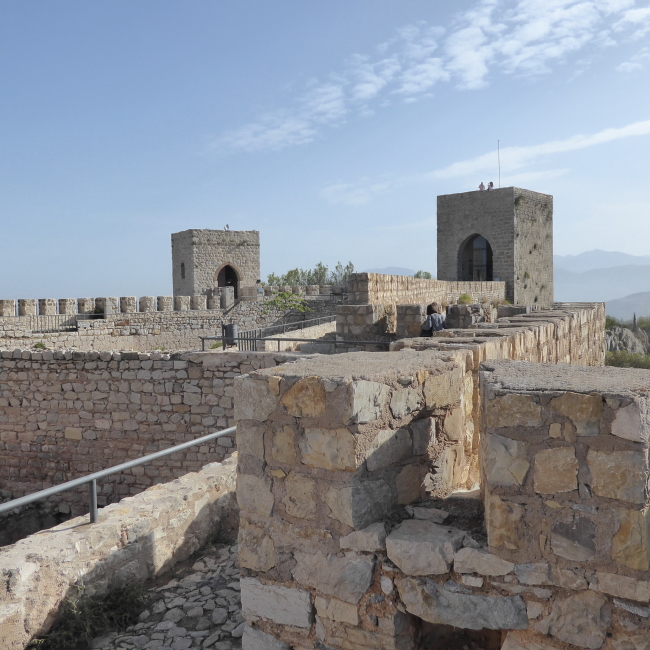
Nice cathedral in town, built in 1249 on the ruins of a mosque. Renovations over the centuries left it mostly baroque. Jaen Cathedral.
Lots of solid gold chapels in there. Spain got lots of gold and silver from the New World, but they basically wasted it all on wars and other nonsense with little benefit except for church decoration.
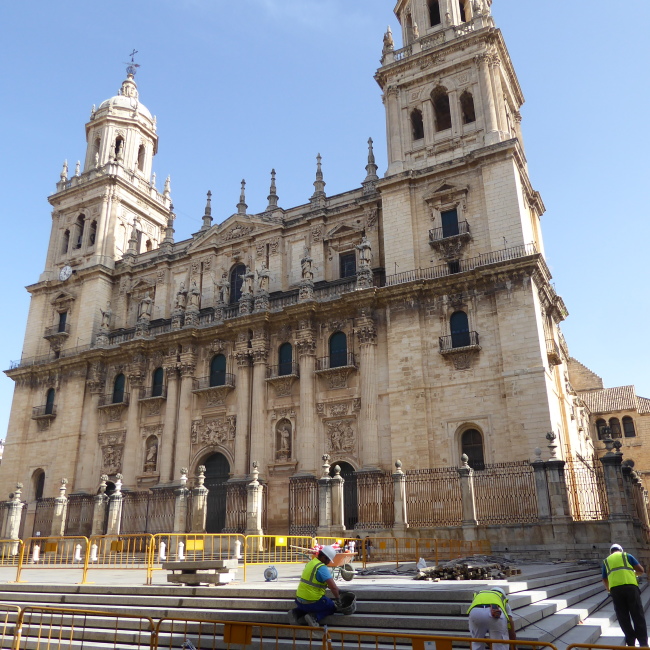
Lots of gold
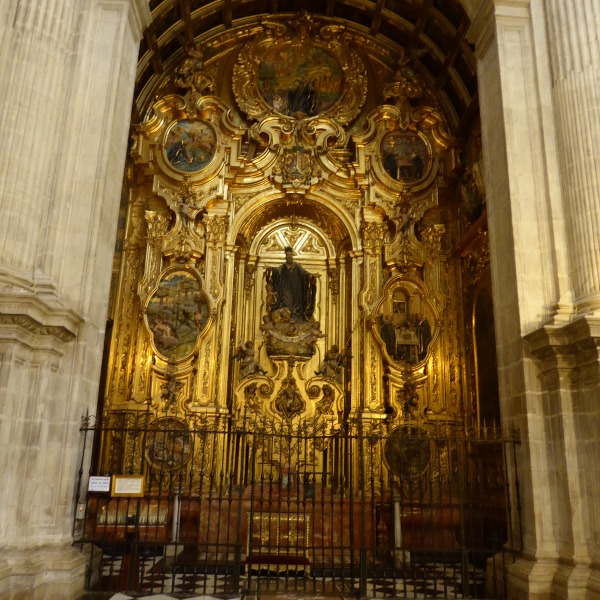
Serious columns in there
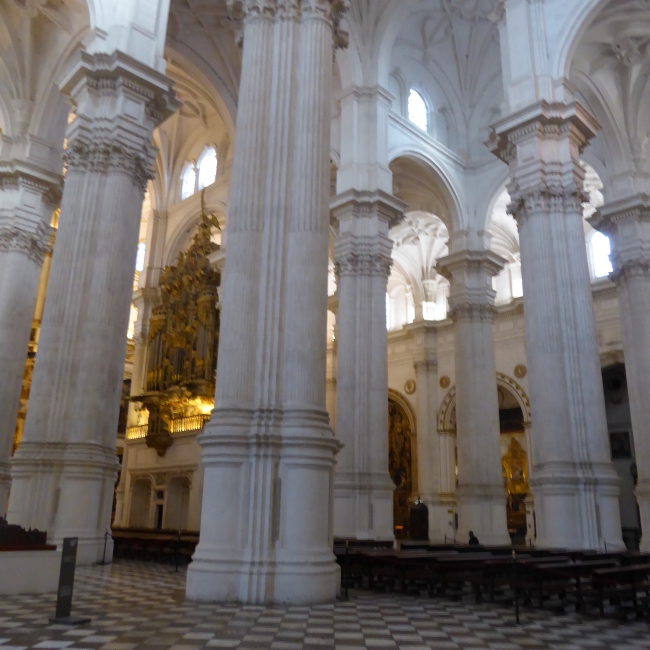
Always stop in a cafe for refreshments
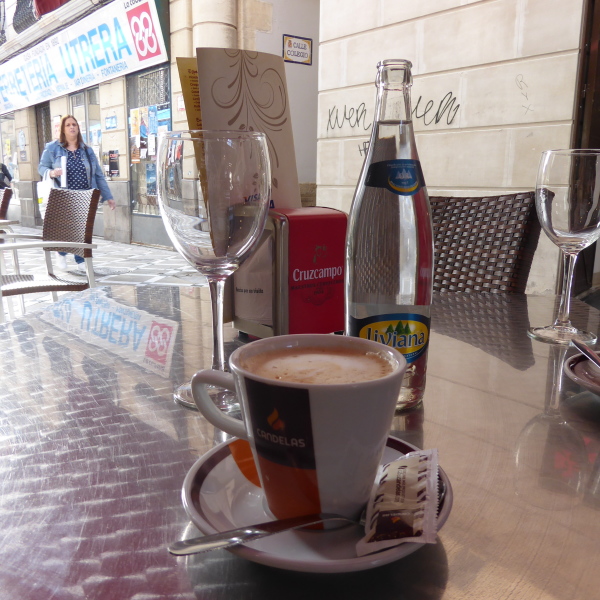
Downtown Jaen

Then back on the road to Grenada, a late-Muslim city as the capital of the Caliphate had its forced move from Cordoba. There was a Roman fort and presence there previously, but had not been much since then.
Grenada has a pleasant, busy downtown and a dramatic cathedral. Like most European cities these days, people go to the old parts for pleasure but the outskirts where people live and work look sort of like the Bronx.
For tourists, it's all about Alhambra. Certainly an interesting and aesthetic place, but after the Muslim places in Seville and Cordoba, quite familiar. Nice Moorish palace, though, something you are supposed to see. If you go, get your ticket/reservation online months in advance because it is a huge tourist destination.
We walked around downtown
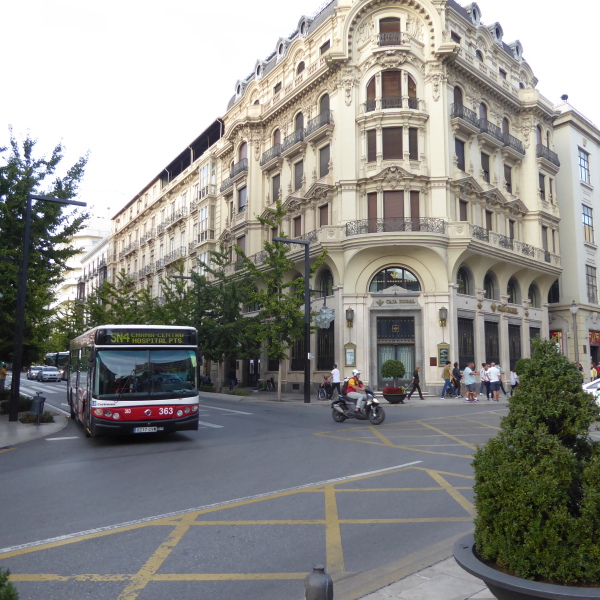
Checked out the cathedral

Another day, we hiked up through the old Muslim quarter to a cool restaurant with a view of Alhambra across the valley
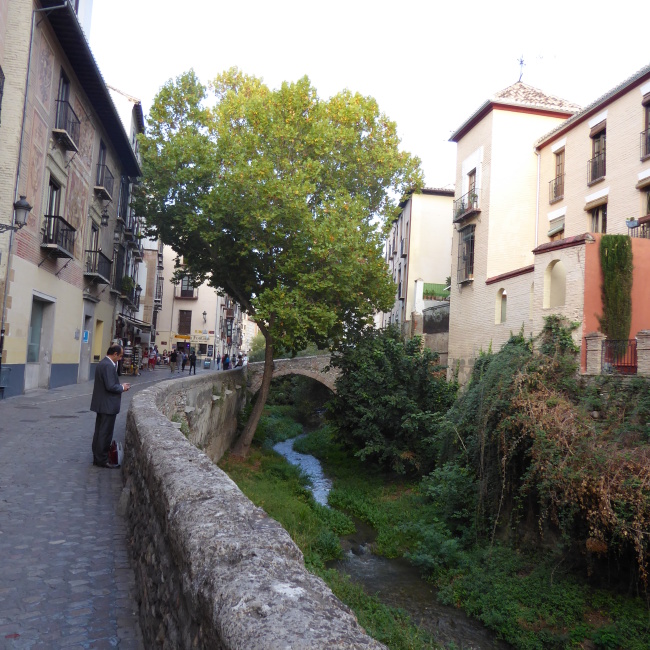
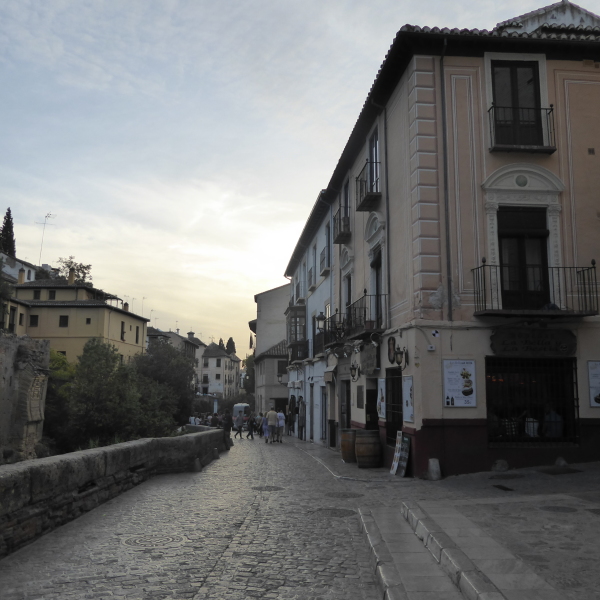
Hiked up the steep hills and finally found Restaurante Estrellas de San Nicola. Fairly expensive rustic little place, probably mostly tourists but just one American family there with their four little cute kids.
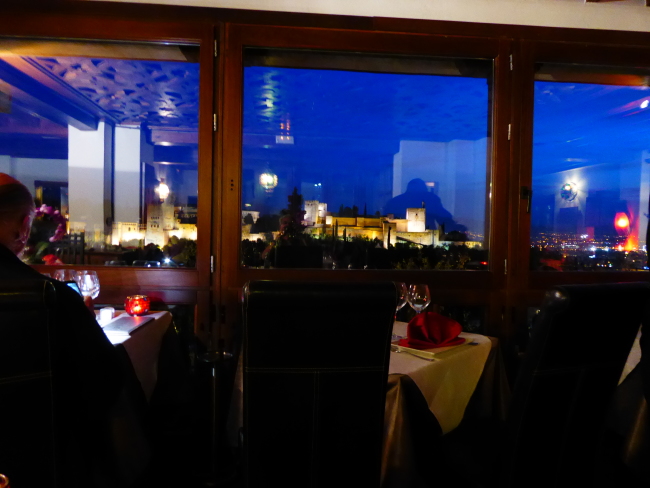
We had gotten the tix for Alhambra online months in advance, so we spent our second day in Granada there. Alhambra was a hilltop Palace/Fortress.
View from our hotel room (looking out to the Generalife) - the Parador on the grounds of Alhambra. An old monastery. Very comfortable but not the Four Seasons and we are not Four Seasons people anyway.
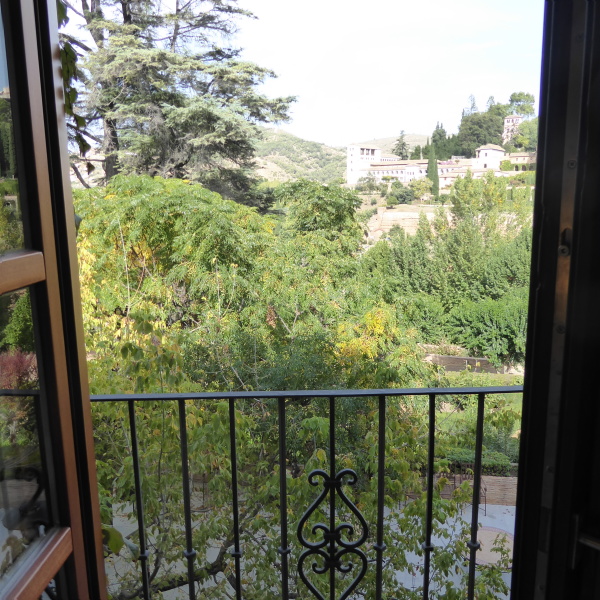
The inner courtyard of the Parador hotel. The Alhambra Parador is the place to stay when visiting Alhambra.
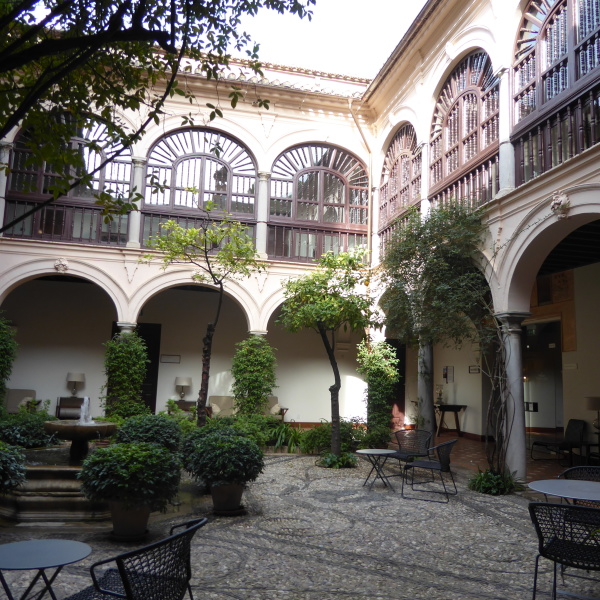
A few random photos of Alhambra -
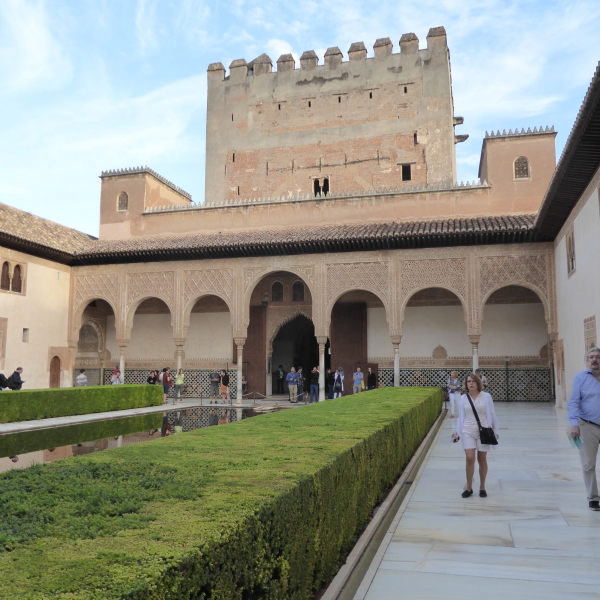
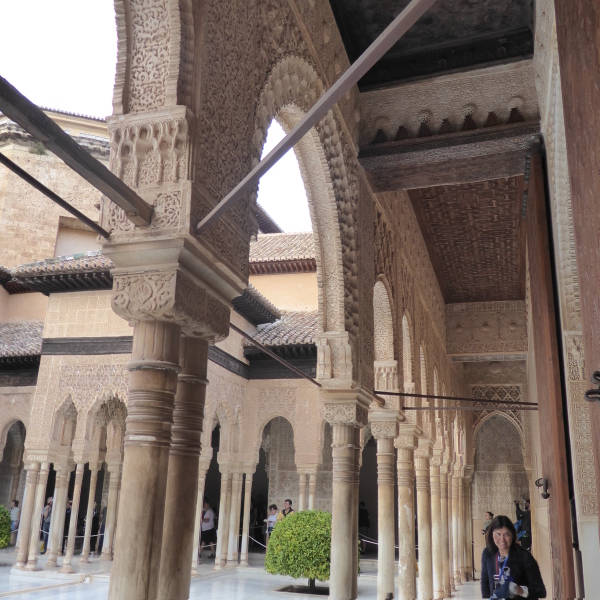
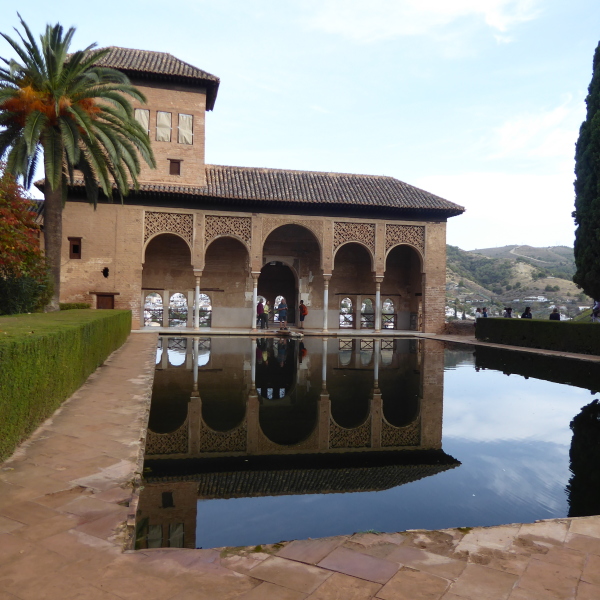
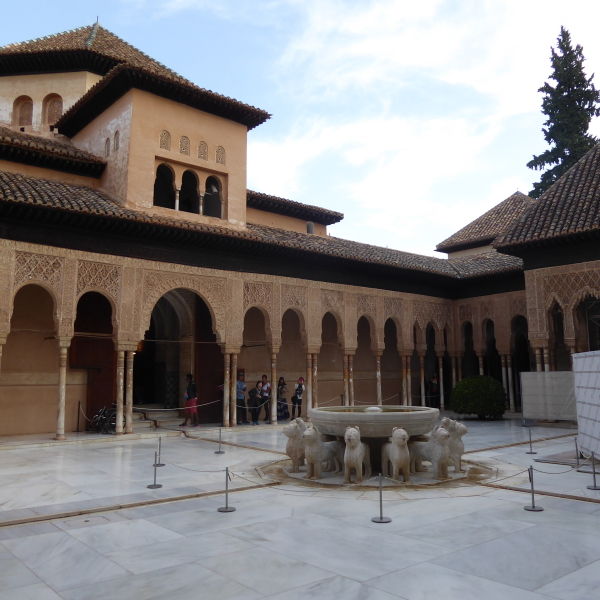
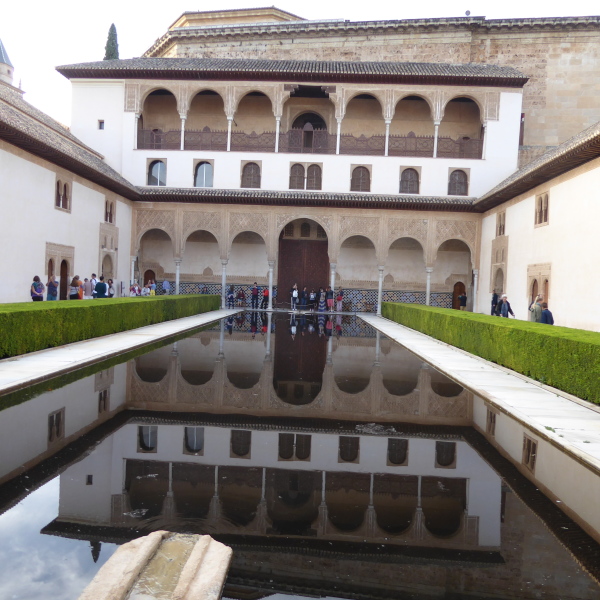
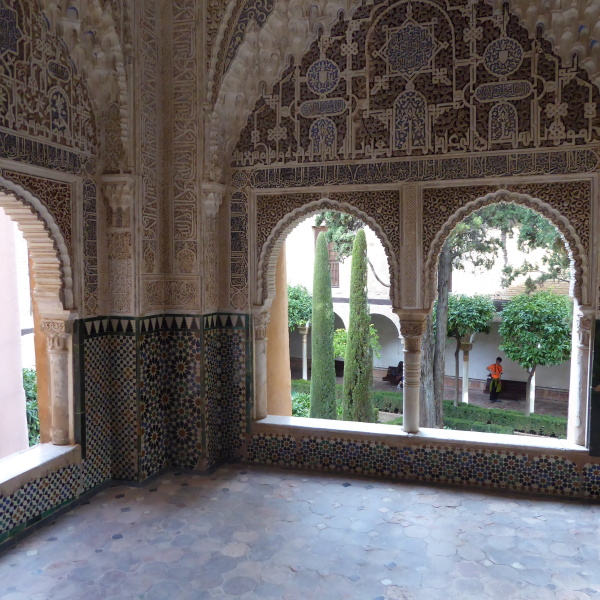
An interior garden, secret garden for the harem
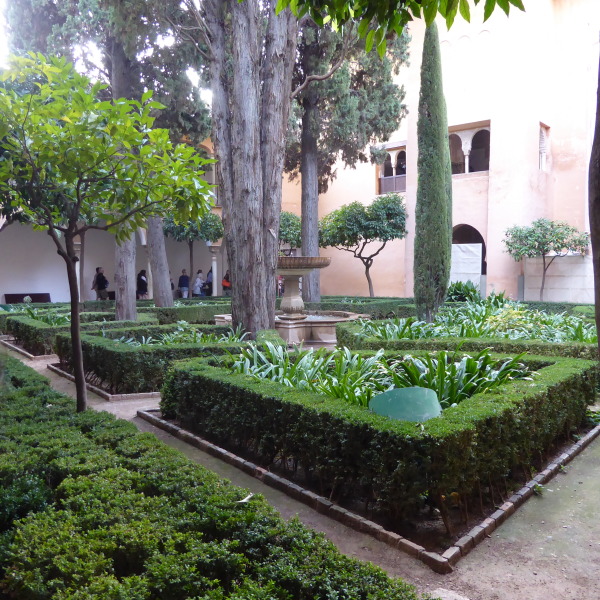
We had a late lunch of tapas at the Parador's cafe, and found two old pals from church and elsewhere seated at the next table. That made for an amusing and extended lunch.
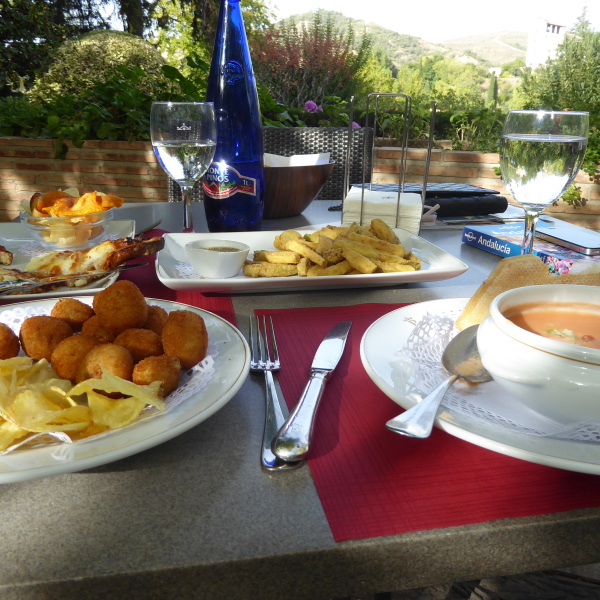
Later or the next day, we took the short hike up to the Generalife, the summer palace bult in the 1300s. It's mostly about the gardens which are tiered into the hillside and irrigated by the Muslim stone pipes and channels.
For some reason, my pics are lousy
The terracing and pools are the original design, but the plantings are not. One good idea I got from the plantings was to include herbs among the flowers. I went home and did that in two of our gardens. Years ago I discovered that I can even keep Rosemary alive up here in the northeast during the winter by mulching heavily, bending the branches over, covering it with plastic, then a bunch of hay of top. Uncover after last frost. It usually works.
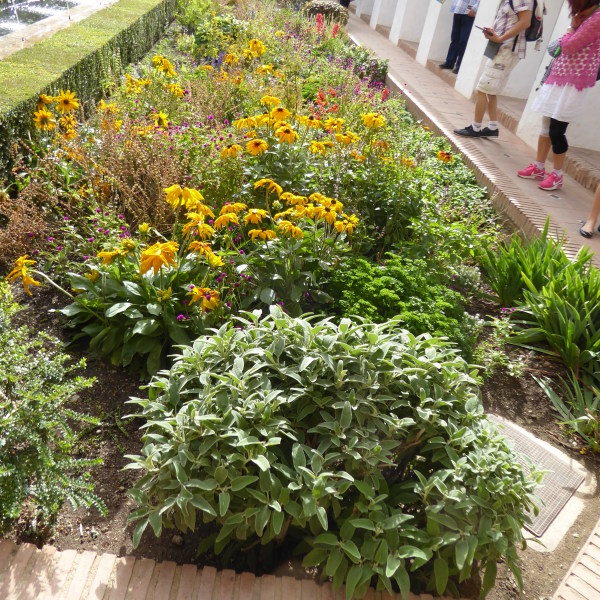
The Moors loved their palace gardens

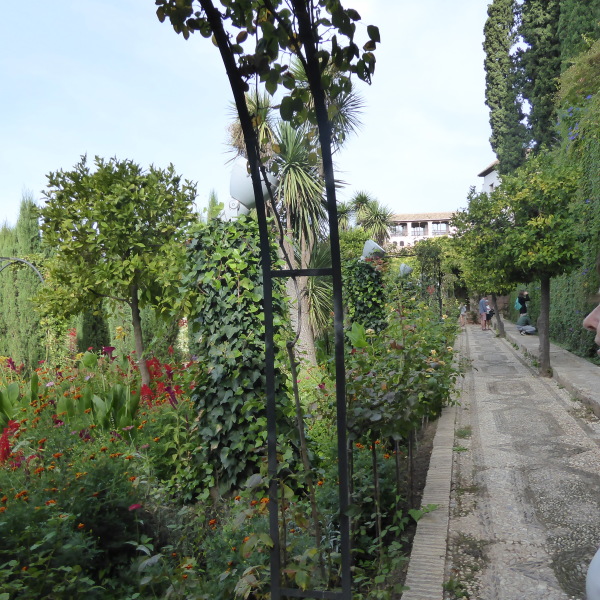
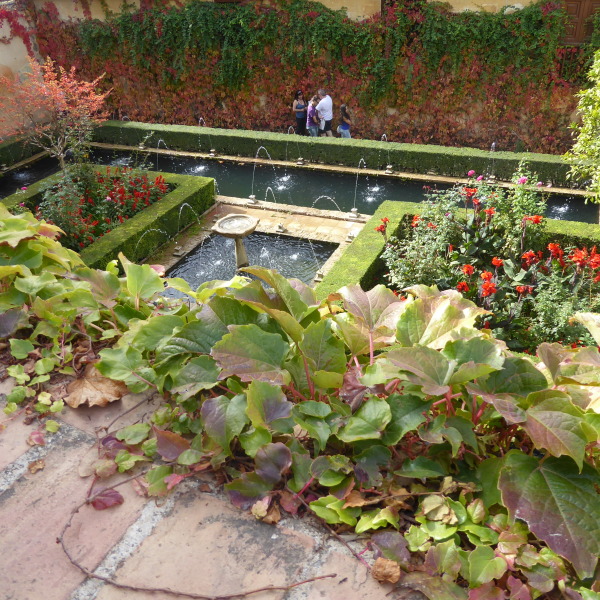
Cool irrigation running down a stairway to a fountain
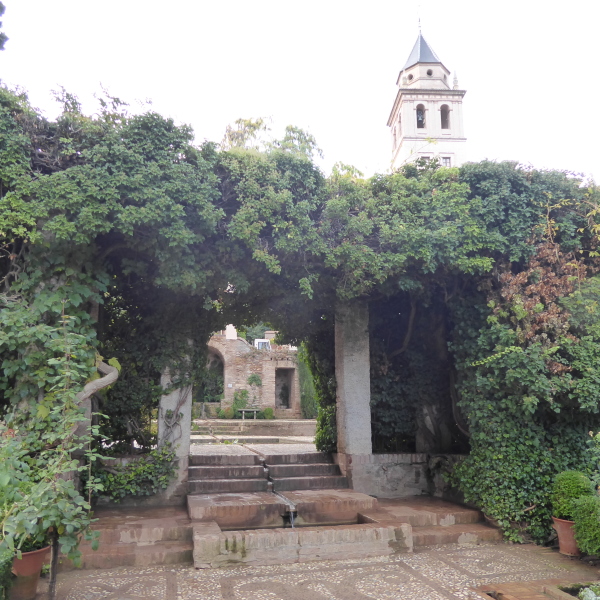
OK, that's enough for now.

